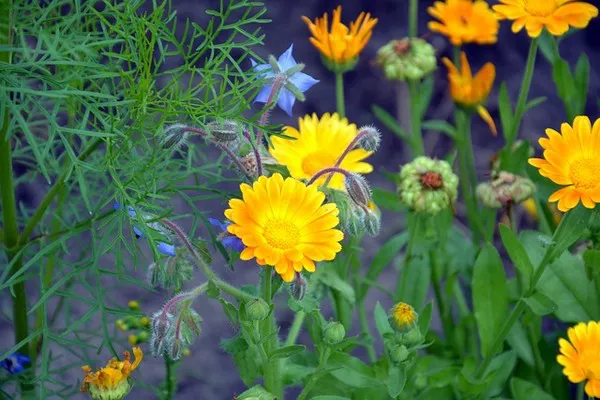Hummingbirds, with their dazzling colors and astonishing aerial maneuvers, are a delight to observe in any garden. To create a haven for these charismatic creatures, it’s essential to know which plants will entice them. Understanding the types of flowers, their colors, shapes, and nectar content that hummingbirds prefer can turn your garden into a buzzing hotspot for these tiny avian wonders.
The Hummingbird’s Appetite
Hummingbirds are nectarivores, meaning they primarily feed on the nectar produced by flowers. In addition to nectar, these tiny birds also consume small insects and spiders to supplement their diet with proteins and other essential nutrients. To attract hummingbirds to your garden, selecting plants that provide a rich source of nectar is crucial.
Flower Characteristics That Hummingbirds Love
Hummingbirds have specific preferences when it comes to flowers. They are particularly drawn to tubular-shaped blooms, which allow them to insert their long, slender bills to access the nectar hidden within. Examples of tubular flowers that hummingbirds find irresistible include salvias, penstemons, and columbines. The tubular shape provides an ideal feeding mechanism for hummingbirds, allowing them to reach deep into the flower.
Additionally, hummingbirds are attracted to brightly colored flowers, especially shades of red, orange, and pink. These vibrant hues act as beacons, catching the attention of these tiny birds from a distance. Red is a particularly appealing color, as it stands out against the green foliage and is easily visible to hummingbirds in flight.
Native Plants: A Natural Magnet
Choosing native plants is a strategic way to attract hummingbirds. Native plants have evolved alongside local wildlife, including hummingbirds, and often have mutualistic relationships with these species. Native plants provide familiar and reliable food sources, making them an attractive option for hummingbirds.
Examples of native plants that hummingbirds are known to favor include trumpet vine (Campsis radicans), bee balm (Monarda spp.), and cardinal flower (Lobelia cardinalis). Integrating these species into your garden not only supports local ecosystems but also enhances the likelihood of attracting hummingbirds.
Seasonal Variety
Hummingbirds are migratory birds, and their preferences can change depending on the season. Providing a diverse array of flowering plants that bloom at different times ensures a steady supply of nectar throughout the year, making your garden a consistent and reliable food source for hummingbirds.
Early-blooming plants like bleeding heart (Dicentra spectabilis) and coral honeysuckle (Lonicera sempervirens) can attract hummingbirds in the spring, while summer-blooming salvias, zinnias, and butterfly bush (Buddleja davidii) can keep them well-fed during the warmer months. Late-blooming fall flowers like sedum and autumn sage (Salvia greggii) can extend the hummingbird-friendly environment into the autumn.
Grouping and Arrangemen
Arranging your hummingbird-attracting plants in clusters or groups can enhance their visibility and appeal to these fast-flying birds. Grouping similar plants together creates a concentrated source of nectar, making it easier for hummingbirds to find and feed efficiently.
Consider planting in layers, with taller plants at the back and shorter ones in the front, to create a visually appealing garden while ensuring that all plants are easily accessible to hummingbirds. This layered approach not only facilitates feeding but also provides cover and perching spots for these energetic birds.
Maintenance and Care
Maintaining a hummingbird-friendly garden goes beyond plant selection. Regular pruning, deadheading, and proper watering are essential aspects of garden care that contribute to the overall health and attractiveness of your space to hummingbirds.
Deadheading, or removing spent flowers, encourages continuous blooming and ensures a fresh supply of nectar. Pruning helps maintain the shape and vitality of the plants, preventing overgrowth that may obstruct hummingbird access to the flowers. Adequate watering, especially during dry periods, is crucial to keep the plants healthy and blooming.
See Also How Big Can Jade Plants Get?
Conclusion
Creating a garden that attracts hummingbirds requires careful consideration of plant selection, arrangement, and maintenance. By choosing tubular flowers with vibrant colors, favoring native species, providing seasonal variety, and arranging plants strategically, you can transform your outdoor space into a haven for these enchanting birds. With a bit of planning and care, you can enjoy the mesmerizing sight of hummingbirds flitting and hovering among your blooming plants, adding a touch of magic to your garden.


